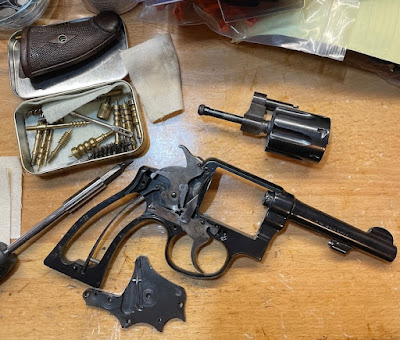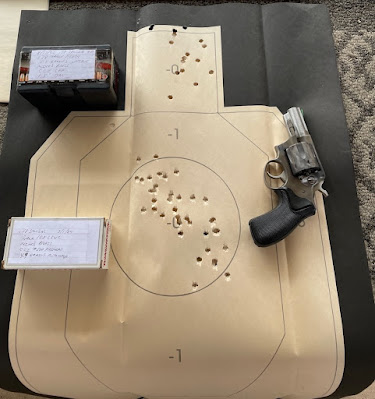Once you get north of 40 seeing the front sight on a pistol can become challenging. I'm in my second half-century so this has gotten even worse than it was for me in my forties.
If it's an older gun with either a plain black or worse yet, stainless front sight, it can be nigh impossible, especially if shooting indoors. If you can't replace the front sight or are unwilling to do so because of the gun's design or collectibility, painting it can make a big difference.
Several years ago I started out by painting the front sight on a couple guns white. This works as long as you're not shooting at a white target, at which point it's even worse than an unpainted sight. So, I picked up a set of Birchwood Casey Touch Up Sight Pens. The set came with three paint pens: white, red, and a lime green. The white pen was dead out of the box but the green pen is still going strong.
I first degrease the sight blade I want to paint, using rubbing alcohol. You can also use acetone. Wait for that to dry, then add a white base coat. Since my white pen was DOA I used white out correction fluid until I ran out, then I bought a bottle of white nail polish.
For example, here's the 1920s-vintage S&W Military & Police revolver I just got. The front sight is a thin half moon machined as part of the barrel.
First, the base coat:
(Sorry for the crappy focus.)
The white base coat helps the top coat(s) in green pop more. I generally use 2 or 3 coats of green, depending on how it looks. Make sure to let it dry thoroughly between coats.
Here's what it looks like with two coats of green. I'm going to add another.
White is very visible in the woods even at dusk but since I often shoot at white targets the green is a good compromise between maximum visibility in low light and usefulness against a variety of backgrounds.
I use this color combination on the percussion muzzleloader that I shoot in woods walks, on which I never know what color the targets will be painted. So far, so good.
Hoppe's No.9 will dissolve the paint but didn't seem to hurt the nail polish. Solvents like Ed's Red which contains acetone will dissolve the nail polish, as well.
The paint does wear off so I'm going to experiment with a clear top coat to hopefully protect the green and keep me from having to touch it up as frequently.
Note that I leave my rear sights black. Whether shooting a rifle or pistol, your focus should be on the front sight.













